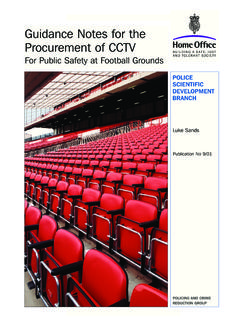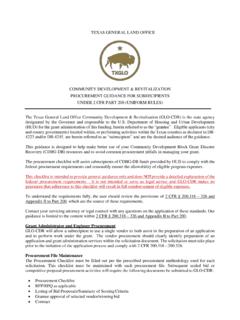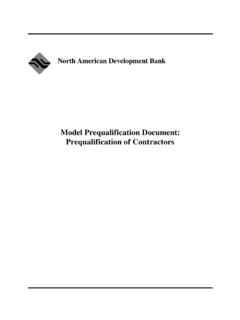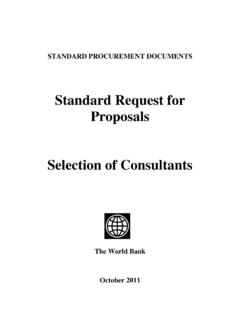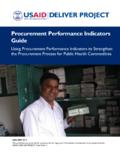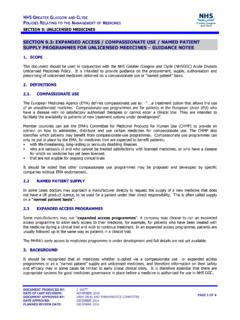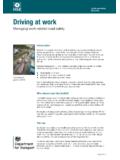Transcription of New ATO guidance on exploration deductions - EY
1 Tax AlertNew ATO guidance on explorationdeductionsOn 28 October 2015, the Australian Taxation Office (ATO) released a long-awaited draft taxation ruling (TR 2015/D4) to provide principle-basedguidance on what constitutes exploration for income tax purposes and theapplication of income tax deduction rules to exploration draft ruling is the product of an extensive confidential consultationprocess that involved key industry stakeholders. In our opinion, it providesa sensible outcome for taxpayers and demonstrates the benefits of taking apositive and collaborative approach to this particular to this draft ruling, the ATO s published view was stated in Taxation Ruling TR 98/23,which was issued almost two decades ago. There has in recent years been increasinguncertainty over the exact scope of eligible exploration expenditure for income tax purposes,particularly in the context of front end engineering and design (FEED) and economicfeasibility study costs due to the growing scale and complexity of resources projects(especially LNG projects) which have a long lead time before final investment decisions (FID)are outcomes in the new draft ruling released by the ATO include.
2 The exploration deduction provision under section 40-730 of theIncome TaxAssessment Act 1997does not constitutea code for exploration expenditure resources companies with an existing mining or exploration business, an immediatededuction may be available under the general deduction provision (section 8-1) inrespect of exploration expenditure incurred in the context of that business. There is no bright line test in determining the character or nature of expenditure for thepurposes of section 8-1 or subsection 40-730. This means a FID or Decision to Mine(DtM) cannot be used for the purposes of classifying expenditure. In particular, the draftruling notes that the following expenditure will not qualify for an immediate deductionunder section 8-1 or subsection 40-730(1): Long-lead items; and Early development and execution costs which may become regret costs if the projectdoes not proceed to a glanceuATO issues draftexploration ruling afterextensive consultationwith resources industryuThe draft ruling providesdetailed guidance on theapplication of thededuction rules underboth section 8-1 andsection 40-730 of theIncome Tax AssessmentAct 1997 with particularfocus on the issueswhich have emergedsince TR 98/23uThe ruling is expected toapply retrospectivelyonce finaliseduThe draft ruling offersopportunity for resourcescompanies to shape theATO s future complianceapproach throughsubmissionsuEY can help with draftingsubmissions, due by 11 December 2015 Tax Alert.
3 New ato guidance on exploration deductions | EYNovember 2015 | Page 2 Other key items covered by the ATO in the draftruling include: There is no assumption that explorationexpenditure is capital in nature, even ifinformation is produced from this explorationactivity. Instead, the nature or character of theadvantage sought by the taxpayer is relevant indetermining whether expenditure is capital innature. Expenditure incurred, after a DtM, in assessingwhether or not a mine extension or expansionwould be economically feasible can constituteexploration expenditure, where it can bedistinguished from activities directed towards getting at or getting out minerals in relation toan existing mine. Similar principles apply in anoil and gas context. Although the wording of subsection 40-730(1)does not allow apportionment of expenditure(similar to the former Petroleum Resource RentTax provisions, and unlike general deductionsunder section 8-1), the Commissioner acceptsthat apportionment may be made under thissubsection on a fair and reasonable basis.
4 The ATO also provides more guidance on thescope of the exclusions under subsection40-730(2), including the relevant facts thatneed to be taken into account in considering theapplication of that subsection. Although the ruling addresses some aspects ofsection 40-80 (which allows a deduction for thecost of certain depreciating assets first used forexploration), it does not address the meaning of use or first use for exploration or prospecting .Extensive list of examplesThe draft ruling provides an extensive list ofexamples which illustrate the ATO s view on theapplication of subsection 40-730(1). Theseexamples cover broad types of expenditure,including feasibility, FEED and early executioncosts. Extensive input from the resources industrywas sought during the consultation process and theexamples should assist relevant taxpayers inunderstanding the ATO s view of how subsection40-730(1) should be particular, the ATO provides the followingexamples of expenditure that can fall within thedefinition of exploration (and be deductible undersubsection 40-730(1)): FEED work undertaken for the selected basis ofdesign up to the point where the projectschedule, cost estimates, and risks can to a sufficient level of certainty inorder to ascertain whether a decision to mineshould be made FEED work in respect of supportinginfrastructure, including accommodation,supply bases, roads and material receivingfacilities, as well as social infrastructure, such asairports, roads, hospitals, schools etc.
5 Which willbe handed to a government agency oncompletion Environmental impact studies Costs of re-examining feasibility of abandonedprojects under an alternative basis of design Feasibility costs in respect of downstreaminfrastructure Drilling costs undertaken after a DtM but beforeany development activities take placeBy contrast, the ATO provides that the followingwould not normally constitute exploration : Early execution activities which may becomeregret costs if the project does not proceed Long-lead items which are required to bepurchased early so as to not delay the project Detailed engineering and design works,procurement of assets and construction works Acquisition of land prior to a DtMTax Alert: New ato guidance on exploration deductions | EYNovember 2015 | Page 3 Our initial observationsWhilst the outcomes in this draft ruling are sensible,caution is required in the following areas: The draft ruling indicates that explorationexpenditure, in some cases, can be deductibleunder either section 8-1, subsection 40-730(1)or section 40-80 ( any information ortangible assets created from explorationactivities).
6 Taxpayers who seek to claim adeduction for exploration expenditure must bemindful of the different requirements undereach of these sections. Under section 8-1,expenditure needs to have a necessaryconnection with income earning operations orbe incidental and relevant to those the other hand, to be deductible undersubsection 40-730(1), exploration expendituremust be incurred on exploration or prospectingactivities for minerals (including petroleum). Forexpenditure to be on exploration orprospecting activities for minerals, there mustbe a direct or close link between the two. Undersection 40-80, an asset must be first used forexploration. The draft ruling also indicates that theinformation created as a result of undertakingan economic feasibility study is not mining,quarrying or prospecting information andtherefore it is not a depreciating may need to revisit previouspositions adopted, for example with respect toacquisition scenarios and allocations to assets under the income tax consolidation of applicationWhen issued in final, the ATO proposes to apply theruling to expenditure incurred both before and afterits date of issue.
7 Taxation Ruling TR 98/23 hasbeen withdrawn from the date of issue of the newdraft ruling, being 28 October this regard, the ATO has noted that it expects thedraft ruling to provide taxpayers with at least asfavourable an outcome as under TR 98/23. Ifcircumstances arise where the new ruling providesa less favourable outcome, they are encouraged toapproach the ATO to discuss possible actions in invitedThe ATO has invited submissions about the draftruling, including its proposed date of are due by 11 December compliance approachThe ATO has indicated in the draft ruling that it isdeveloping a practical compliance approach , andwill consult upon this approach before its understand the ATO is considering issuing practical guidance on the ruling s application whenthe draft ruling is finalised.
8 We expect this practicalguidance to: Assist taxpayers in assessing and documentingtheir exploration claims; and Assist the ATO in undertaking risk assessmentand compliance this means for youCompanies engaged in resources exploration ordevelopment should review their historical andcurrent expenditure classification approaches toconfirm they adhere to the guidance issued bythe ATO in the draft ruling, as the draft rulingmay impact on income tax and deferred taxaccounting positions previously can assist with reviewing internal policies inthis regard, and can also draft submissions tothe ATO about this draft ruling on behalf Alert: New ato guidance on exploration deductions | EYNovember 2015 | Page 4 For more information please contact:AdelaideJanet FinlayTel: +61 8 8417 ChangTel: +61 7 3011 HennesseyTel: +61 7 3243 LaxonOceania Tax - Energy LeaderTel: +61 7 3243 van DinterTel.
9 +61 3 8650 GrimleyOceania Leader - Mining &MetalsTel: +61 8 9429 MistilisOceania Tax Leader - Mining &MetalsTel: +61 8 9429 DixonTel: +61 8 9429 CharlesTel: +61 2 9248 | Assurance | Tax | Transactions | AdvisoryAbout EYEY is a global leader in assurance, tax, transactionand advisory services. The insights and qualityservices we deliver help build trust and confidence inthe capital markets and in economies the world develop outstanding leaders who team to deliveron our promises to all of our stakeholders. In sodoing, we play a critical role in building a betterworking world for our people, for our clients and forour refers to the global organization, and may refer toone or more, of the member firms of Ernst & YoungGlobal Limited, each of which is a separate legalentity. Ernst & Young Global Limited, a UK companylimited by guarantee, does not provide services toclients.
10 For more information about our organization,please visit EY s Tax servicesYour business will prosper as you build it on a strongfoundation and grow it in a sustainable way. At EY,we believe that managing your tax obligationsresponsibly and proactively can make a criticaldifference. Our global teams of talented people bringyou technical knowledge, business experience andconsistency, all built on our unwavering commitmentto quality service wherever you are and whatevertax services you create highly networked teams that can adviseon planning, compliance and reporting and help youmaintain constructive tax authority relationships wherever you operate. Our technical networksacross the globe can work with you to reduceinefficiencies, mitigate risk and improve 38,000 tax professionals, in more than 140countries, are committed to giving you the quality,consistency and customization you need to supportyour tax more information, please 2015 Ernst & Young, Rights NO: AU00002451 This communication provides general informationwhich is current as at the time of production.










